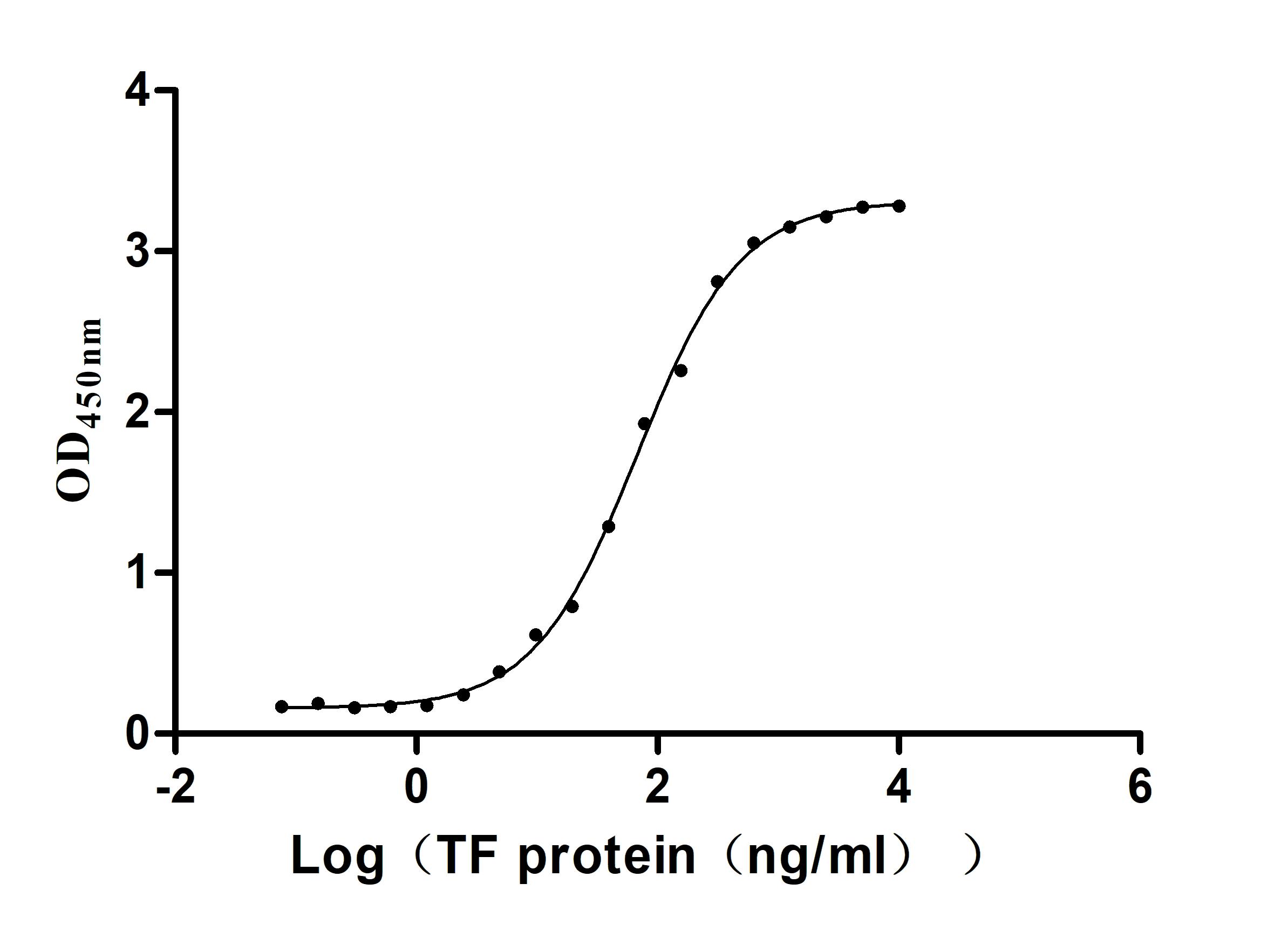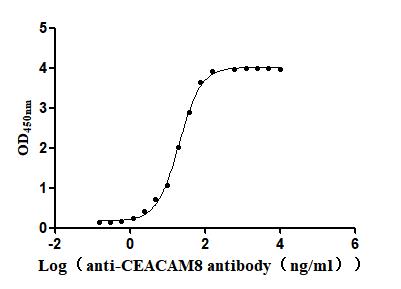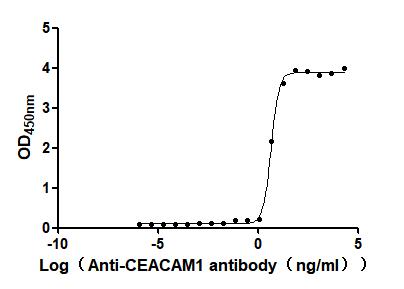Recombinant Danio rerio POU domain, class 5, transcription factor 1 (pou5f1)
-
中文名称:斑马鱼pou5f1重组蛋白
-
货号:CSB-YP845853DIL
-
规格:
-
来源:Yeast
-
其他:
-
中文名称:斑马鱼pou5f1重组蛋白
-
货号:CSB-EP845853DIL
-
规格:
-
来源:E.coli
-
其他:
-
中文名称:斑马鱼pou5f1重组蛋白
-
货号:CSB-EP845853DIL-B
-
规格:
-
来源:E.coli
-
共轭:Avi-tag Biotinylated
E. coli biotin ligase (BirA) is highly specific in covalently attaching biotin to the 15 amino acid AviTag peptide. This recombinant protein was biotinylated in vivo by AviTag-BirA technology, which method is BriA catalyzes amide linkage between the biotin and the specific lysine of the AviTag.
-
其他:
-
中文名称:斑马鱼pou5f1重组蛋白
-
货号:CSB-BP845853DIL
-
规格:
-
来源:Baculovirus
-
其他:
-
中文名称:斑马鱼pou5f1重组蛋白
-
货号:CSB-MP845853DIL
-
规格:
-
来源:Mammalian cell
-
其他:
产品详情
-
纯度:>85% (SDS-PAGE)
-
基因名:
-
Uniprot No.:
-
别名:pou5f1; gp-9; pou-2; pou2; POU domain; class 5; transcription factor 1; POU domain protein 2
-
种属:Danio rerio (Zebrafish) (Brachydanio rerio)
-
蛋白长度:full length protein
-
表达区域:1-472
-
氨基酸序列MTERAQSPTA ADCRPYEVNR AMYPQAAGLD GLGGASLQFA HGMLQDPSLI FNKAHFNGIT PATAQTFFPF SGDFKTNDLQ GGDFTQPKHW YPFAAPEFTG QVAGATAATQ PANISPPIGE TREQIKMPSE VKTEKDVEEY GNEENKPPSQ YHLTAGTSSI PTGVNYYTPW NPNFWPGLSQ ITAQANISQA PPTPSASSPS LSPSPPGNGF GSPGFFSGGT AQNIPSAQAQ SAPRSSGSSS GGCSNSEEEE TLTTEDLEQF AKELKHKRIT LGFTQADVGL ALGNLYGKMF SQTTICRFEA LQLSFKNMCK LKPLLQRWLN EAENSENPQD MYKIERVFVD TRKRKRRTSL EGTVRSALES YFVKCPKPNT LEITHISDDL GLERDVVRVW FCNRRQKGKR LALPFDDECV EAQYYEQSPP PPPHMGGTVL PGQGYPGPAH PGGAPALYMP SLHRPDVFKN GFHPGLVGHL NS
-
蛋白标签:Tag type will be determined during the manufacturing process.
The tag type will be determined during production process. If you have specified tag type, please tell us and we will develop the specified tag preferentially. -
产品提供形式:Lyophilized powder
Note: We will preferentially ship the format that we have in stock, however, if you have any special requirement for the format, please remark your requirement when placing the order, we will prepare according to your demand. -
复溶:We recommend that this vial be briefly centrifuged prior to opening to bring the contents to the bottom. Please reconstitute protein in deionized sterile water to a concentration of 0.1-1.0 mg/mL.We recommend to add 5-50% of glycerol (final concentration) and aliquot for long-term storage at -20℃/-80℃. Our default final concentration of glycerol is 50%. Customers could use it as reference.
-
储存条件:Store at -20°C/-80°C upon receipt, aliquoting is necessary for mutiple use. Avoid repeated freeze-thaw cycles.
-
保质期:The shelf life is related to many factors, storage state, buffer ingredients, storage temperature and the stability of the protein itself.
Generally, the shelf life of liquid form is 6 months at -20°C/-80°C. The shelf life of lyophilized form is 12 months at -20°C/-80°C. -
货期:Delivery time may differ from different purchasing way or location, please kindly consult your local distributors for specific delivery time.Note: All of our proteins are default shipped with normal blue ice packs, if you request to ship with dry ice, please communicate with us in advance and extra fees will be charged.
-
注意事项:Repeated freezing and thawing is not recommended. Store working aliquots at 4°C for up to one week.
-
Datasheet :Please contact us to get it.
靶点详情
-
功能:Involved in early development of embryos, especially in the process of gastrulation. May play an important role in establishing and specifying rhombomeric segments. Seems to be required to maintain the cells in a highly undifferentiated state. In contrast to POU2, T-POU2 lacks DNA-binding activity because of its incomplete pou domain structure. Overexpression of POU2 does not have any effect on development, whereas overexpression of t-POU2 causes developmental retardation or arrest before gastrulation.
-
基因功能参考文献:
- Pou2 is essential for endoderm formation. Embryos devoid of maternal and zygotic pou2 lack endodermal precursors. PMID: 14723850
- Western blot analysis were conducted on developing hatchlings with Oct4 antibody and at 13.6 and 21.6mugL(-1)dose,it showed over expression elucidating stimulatory role of nanosilver. In silico analysis depicted a firm interaction of nanosilver with Oct4 revealing their key role in growth stimulation of developing embryos. PMID: 29778081
- The authors show, at single-cell resolution in vivo, that Pou5f3 complexes with Nanog to pattern mesendoderm differentiation at the blastula stage. PMID: 27684073
- Data suggest that, in developing gastrula, Znfl1 controls developmental gene expression of Hoxb1b in embryonic posterior neuroectoderm by acting upstream of Pou5f3 and Sall4; these proteins appear to be involved in neurogenesis. (Znfl1 = zinc finger-like gene 1; Hoxb1b = homeobox B1b protein; Pou5f3 = POU domain class 5 transcription factor 3; Sall4 = spalt-like transcription factor 4) PMID: 28623229
- Regulation of mych by Pou5f1 appears to be direct transcriptional activation. PMID: 24643012
- The posttranslational modification by phosphorylation opens the possibility that Pou5f1 may be subject to temporal or region specific modulation of its activity or stability by embryonic signaling mechanisms. PMID: 24130110
- discuss mechanistic implications of simultaneous activation of transcriptional targets by ubiquitous, like Pou5f1, and region-specific inducers, emerging as a common regulatory motif in early development PMID: 24211655
- maternal Nanog, Pou5f1 and SoxB1 are required to initiate the zygotic developmental program and induce clearance of the maternal program by activating miR-430 expression PMID: 24056933
- thses data position Pou5f1 and SOX-POU sites at the center of the zygotic gene activation network of vertebrates and provide a link between zygotic gene activation and pluripotency control. PMID: 23950494
- The defects due to HEP induction were rescued by introducing wild-type pou2 mRNA before the heat treatments. PMID: 22921661
- Vox plays a key role downstream of BMP signals in regulating the capacity of Nodal to induce endoderm versus mesoderm by modulating the activity of the Casanova/Pou2 regulatory system. PMID: 23364327
- Pou2 functions in multiple aspects of vertebrate development, especially in the binary decision of the mesendoderm to mesoderm and endoderm in different ways depending on the developmental stage. PMID: 22913532
- show that Pou5f1 binds to phylogenetically conserved Oct/Pou5f1 sites in the vox promoter, both in vivo and in vitro PMID: 21621531
- The temporospatial structure of the zebrafish Pou5f1 target networks may explain aspects of the evolution of the mammalian stem cell networks. PMID: 20212526
- Data show that embryos genetically depleted of both maternal and zygotic pou2 function exhibit extreme dorsoventral patterning defects and, independently, a blastoderm-specific arrest of epiboly. PMID: 16775002
- Alterations of the cytoskeleton in all three embryonic lineages contribute to the epiboly defects of Pou5f1/Oct4 deficient MZspg zebrafish embryos. PMID: 18215655
- These data provide a scheme wherein pou2/pou5f1 expression in zebrafish embryos is regulated by both an autoregulatory loop and repression by RA emanating from the posterior mesoderm. PMID: 18407549
显示更多
收起更多
-
亚细胞定位:Nucleus.
-
蛋白家族:POU transcription factor family, Class-7 subfamily
-
数据库链接:
Most popular with customers
-
Recombinant Human R-spondin-1 (RSPO1), partial (Active)
Express system: Mammalian cell
Species: Homo sapiens (Human)
-
Recombinant Macaca fascicularis Claudin 18.2 (CLDN18.2)-VLPs (Active)
Express system: Mammalian cell
Species: Macaca fascicularis (Crab-eating macaque) (Cynomolgus monkey)
-
Recombinant Human Complement component C1q receptor (CD93), partial (Active)
Express system: Mammalian cell
Species: Homo sapiens (Human)
-
Recombinant Mouse Complement component C1q receptor (Cd93), partial (Active)
Express system: Mammalian cell
Species: Mus musculus (Mouse)
-
Recombinant Human Claudin-6 (CLDN6)-VLPs, Fluorescent (Active)
Express system: Mammalian cell
Species: Homo sapiens (Human)
-
Recombinant Human Serotransferrin(TF) (Active)
Express system: Mammalian cell
Species: Homo sapiens (Human)
-
Recombinant Human Carcinoembryonic antigen-related cell adhesion molecule 8(CEACAM8) (Active)
Express system: Mammalian cell
Species: Homo sapiens (Human)
-
Express system: Mammalian cell
Species: Homo sapiens (Human)


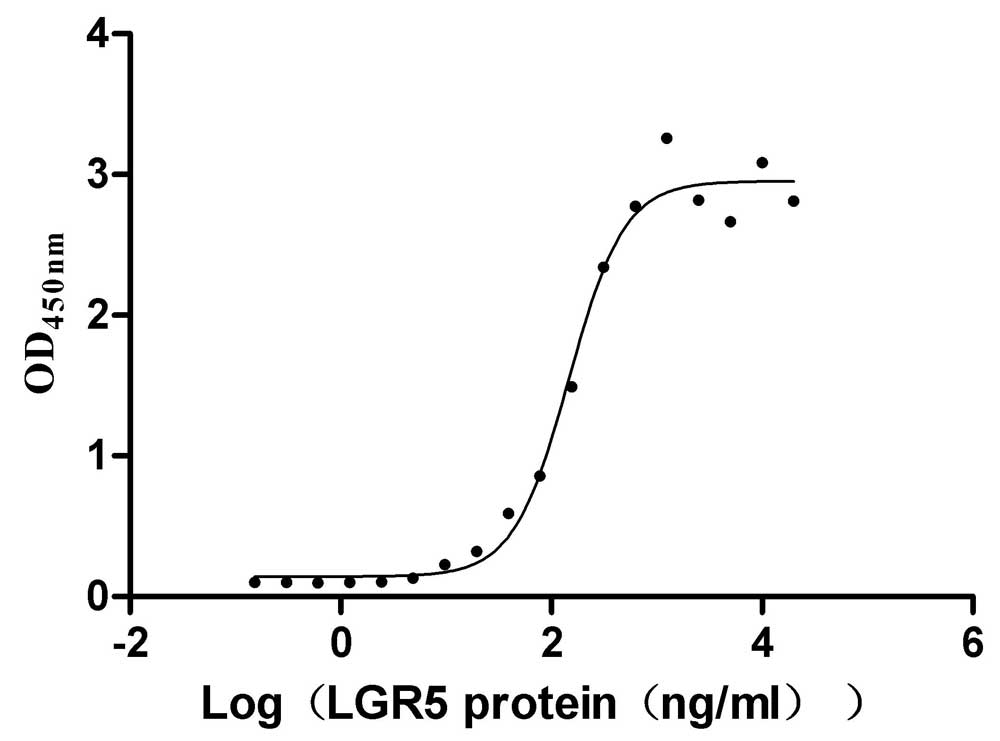
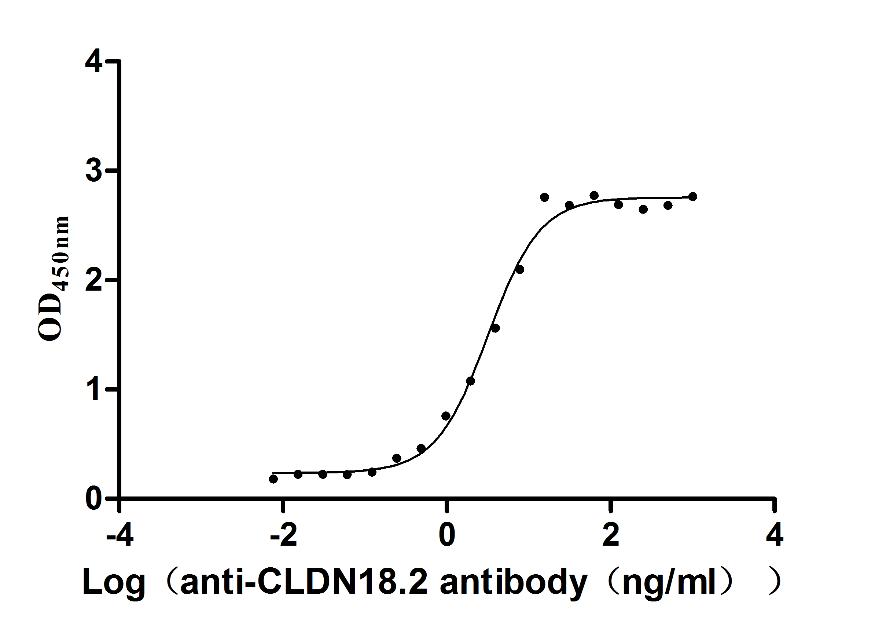
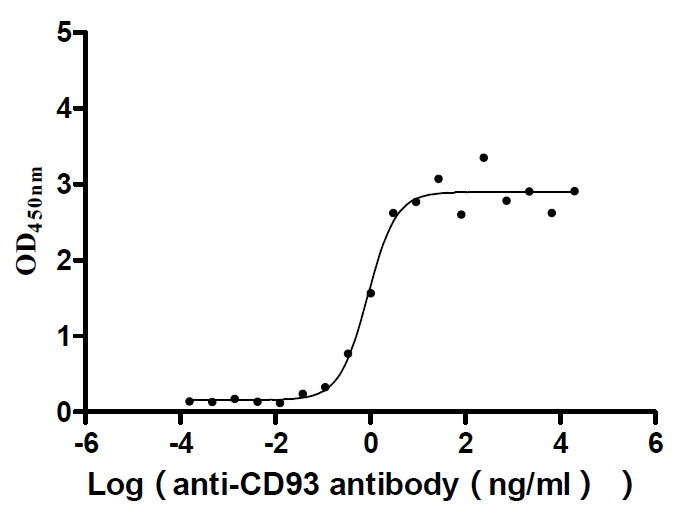
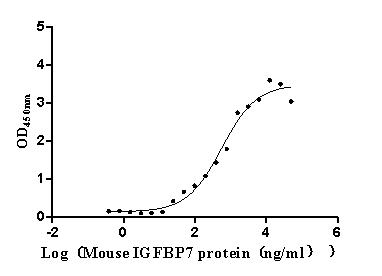
f4-AC1.jpg)
